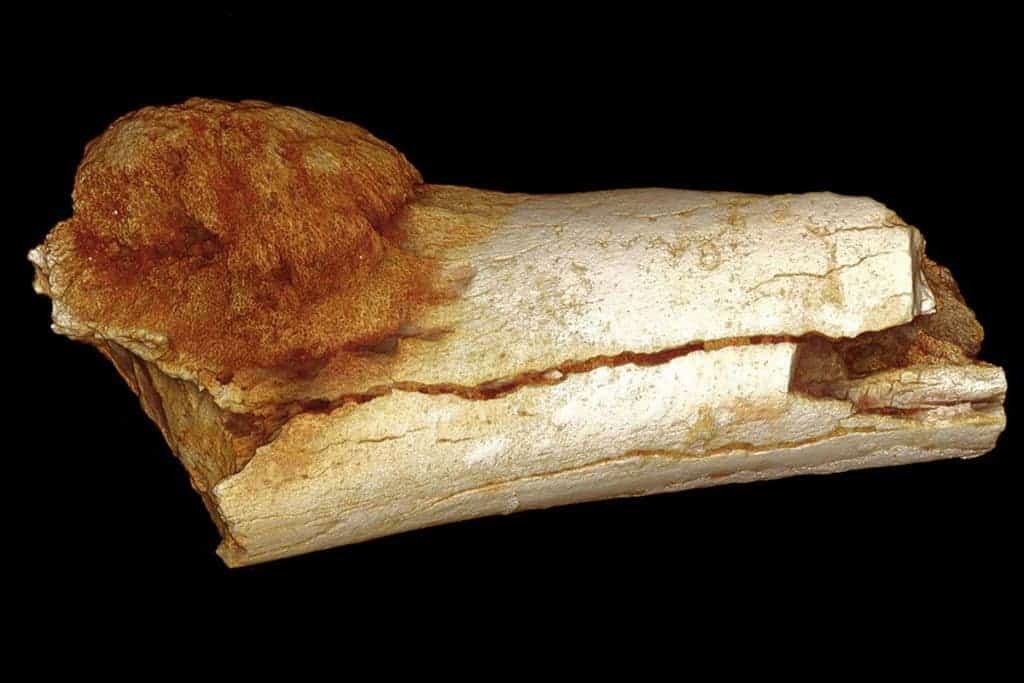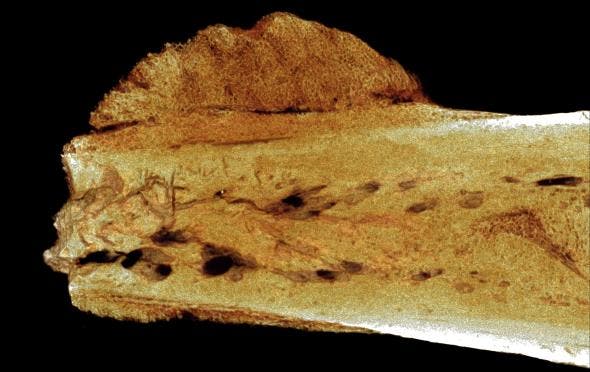Archaeologists have found the oldest evidence of malignant cancer we’ve ever seen — some 1.7 million years old, a fossilized bone from South Africa shows signs of osteosarcoma, a very aggressive form of bone cancer. The bone appears to be human, although researchers have yet to establish exactly which species it belonged to.
The oldest evidence of cancer we’ve ever found comes from a fossil-rich area in South Africa known as the Cradle of Humankind. Using 3-D imaging, researchers diagnosed a fossilized human relative foot bone with an aggressive type of cancer called osteosarcoma. Its original owner is believed to have died in the Swartkrans Cave between 1.6 and 1.8 million years ago, as reported in the South African Journal of Science.
The find could finally end the long-lasting debate about the origins of the disease, a dispute which has endured for so long partially because of a lack of evidence. One reason why we might believe that cancer is a “modern” disease is that it tends to mostly afflict people of 65 or older, but many simply didn’t live that long before the modern age.
“Modern medicine tends to assume cancers and tumours in humans are diseases caused by modern lifestyles and environments,” said study co-author Edward Odes from the University of Witwatersrand, South Africa.
“Finds like this show that the origins of cancer occurred in our ancient relatives, millions of years before modern societies existed, he said.
It’s impossible to determine if the bone belonged to an adult or a child, or if the cancer was the ultimate cause of death, says Bernhard Zipfel, also at the University of Witwatersrand.
“But we can tell this would have affected the individual’s ability to walk or run,” he added.
Odes was also part of a team examining an even older tumour – a benign growth on the vertebrae of a child who lived almost two million years ago. The child belonged to the ape-like hominin species Australopithecus sediba, and the fossil is the oldest human tumour ever discovered. Both diseases were diagnosed from the fossils using X-ray imaging.
“You can opt for the paleo diet, you can have as clean a living environment as you want, but the capacity for these diseases is ancient, and it’s within us regardless of what you do to yourselves,” Odes concluded.











